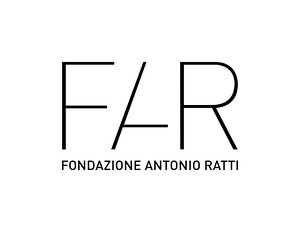October 8, 2023–January 7, 2024
Via Cernobbio, 19
22100 Como
Italy
T +39 031 338 4976
info@fondazioneratti.org
The exhibition Seth Siegelaub: Textile Art Theory, curated by Lorenzo Benedetti, Marja Bloem and Maddalena Terragni, is organised on the occasion of the recent acquisition of the prestigious textile book collection of Seth Siegelaub by Antonio Ratti Foundation, and the consequent donation of his textile collection by Marja Bloem, director of the Stichting Egress Foundation.
The exhibition is articulated in two venues: one in Milan within the Impluvium of Triennale Milano (from October 6), and one in Como, inside the new spaces of FAR’s headquarter (from October 8). Being part of the larger upcoming project dedicated to Seth Siegelaub, the exhibition will be accompanied by a public program curated by Martina Angelotti and Lorenzo Benedetti (on suggestions by Marja Bloem) hosting a series of encounters between artists and professionals from November 2023 till January 2024.
This retrospective on Seth Siegelaub—gallerist, curator, archivist, publisher, collector and activist—explores his research in the artistic, cultural and textile fields, as well as his influence on the new generations; through artworks, textiles and publications, it reconstructs the journey of one of the most fascinating figures of contemporary culture.
The display in Milan designed by Philippe Rahm relates the central axes of the exhibition: contemporary art, the book as exhibition, political publishing and the history of textile science. These chapters explore various aspects of Siegelaub’s work: projects with conceptual artists, research in the bibliographical field and collecting books on textiles and fabrics.
Siegelaub centered his research on the cultural, social and economic values of the textile trade. Together with a great selection of books on textile, many textile items of his fund will be displayed, showcasing the nuclei he gathered: silk textiles produced in Europe, archaeological textiles from Peruvian and Coptic civilizations, ethnographic textiles produced by various civilizations. Emphasis will be placed on the collection of over two hundred headdresses from Middle Eastern, Eastern, African and Oceanic cultures.
Bibliographic and publishing activity played a central role in his work, as a tool for distributing ideas and as a space for thought, thus a section of the exhibition will be dedicated to his extensive and various libraries. Seth’s autographed annotations, partly kept inside the books, symptomatic of continuous research will be displayed as well.
Siegelaub’s book archive represents a conceptual fulcrum in which research on art, fabric and communication theory intertwine. Hence, special attention will be given to his work; from the conceptual publications of the Sixties such as the Xerox Book from 1969, the editing of volumes on politics, such as How to Read Donald Duck from 1971 or Communication and Mass Struggle from 1983 to the activity of collecting books on textile, brought together in his Bibliographica Textilia Historiae from 1997.
The biographical itinerary, reconstructing places characteristic of his cultural activity, will underline Seth Siegelaub’s unclassifiable nature.
A section curated by Lauren van Haaften-Schickt will focus on the period he formulated the famous The Artist’s Contract (The Artist’s Reserved Rights Transfer And Sale Agreement) with the lawyer Robert Projansky in 1971, creating a dialogue with the work of contemporary artists who rethought it in the following years.
The pioneering projects of his New York activity, which made him one of the most significant figures and founders of conceptual art, will be on display with the works of, among others, Carl Andre, Robert Barry, Alighiero Boetti, Daniel Buren, Rosemarie Castoro, Pierre Clerk, Hanne Darboven, Jan Dibbets, Douglas Huebler, Robert Huot, Joseph Kosuth, Robert Morris, Lawrence Weiner, Edward Whiteman, Neil Williams, Laurent Sauerwein.
At the same time, the younger generations’ interest in Seth Siegelaub, and his lifelong attention to them, will be represented by the works of artists belonging to different generations such as Maria Eichhorn, Rini Hurkmans, Sam Hersbach, Matthieu Laurette, Izhar Patkin, Hans Scholten, Berend Strik, Remco Torenbosch and Mario García Torres.
Sponsor Ratti S.p.A.
With the contribution of Comune di Como, Confindustria Como.
Whit the patronage of Camera di Commercio di Como-Lecco.


